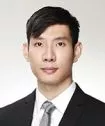I. Introduction
This article is the third in our multi-part series centring around the topic of longevity from the perspective of Singapore law.
In the first part of our series, we provided an overview of the potential interactions the emerging business ecosystem of the longevity industry may have with the regulatory landscape in Singapore. In the second part, we discussed in greater detail the regulations in Singapore concerning the commercialisation of genetic testing of age-related health conditions.
In this article, we aim to provide an overview on the regulatory regime in Singapore governing three (3) growing areas of the longevity industry, being:
a. AgeTech products;
b. longevity drugs; and
c. stem cell and gene therapy.
II. AgeTech products
1) What are AgeTech products?
In broad terms, AgeTech is about digitally enabling the longevity economy, and can refer to any form of assistive technology for older adults 1 It is a shorthand term for new tech-based products and services that are focused on the needs of older people. With many countries experiencing an ageing population, and with the older generations having sizeable spending power, AgeTech has become one of the most dynamic and promising sectors of the longevity industry. The focus of this article will be on the following categories of AgeTech products:
a. digital applications and algorithms (for example, speech recognition which translates unintelligible speech in real time, augmented reality for improving cognitive function); and
b. wearable or non-wearable external devices that may offer less intrusive treatment options for age-related diseases or conditions (for example, wearable neuromodulators, power-assisted walkers and exoskeletons).
2) How are AgeTech products currently regulated in Singapore?
As highlighted above, AgeTech products can be in the form of external devices that seek to manage age-related conditions and/or track certain health markers. They may be classified as "medical devices", which are regulated in Singapore under the Health Products Act 2007 (HPA) if they are used for the "diagnosis, prevention, monitoring, treatment or alleviation of disease" or "injury" not through "pharmacological, immunological or metabolic means".
Before such medical devices can be sold in the Singapore market, and assuming no exemptions apply, they must first be registered with the Health Sciences Authority (HSA) pursuant to the HPA and the Health Products (Medical Devices) Regulations 2010 (HP(MD)R). As part of the registration process, it is also necessary to determine the risk class of the medical device. The table below indicates the four (4) risk classes of medical devices.
| Risk class | Risk level | Medical device examples* |
|---|---|---|
| A | Low risk | Wheelchairs or tongue depressors |
| B | Low to moderate risk | Hypodermic needles or suction equipment |
| C | Moderate to high risk | Ventilators or bone fixation plates |
| D | High risk | Heart valves or implantable defibrillator |
*Examples given are for illustration only
Depending on the business activity with respect to the medical device, an application for product registration or an application for a dealer's licence will then need to be submitted to the HSA:
| Product Registration | Dealer's Licence |
|---|---|
| Product registration of a
medical device is to obtain marketing clearance for its import and
supply in Singapore. Product registration is not mandatory if the
supplier is only importing a particular medical device for
re-export. In terms of risk classes, product registration is not required for medical devices in Class A but is required for medical devices in Classes B, C and D. |
Licensing of dealers is based
on the activity carried out by the company. Only medical device
dealers licensed by the HSA can engage in the manufacture, import
and/or wholesale of medical devices in Singapore. Licences may be
issued for the:
|
It is also mandatory for companies involved in medical devices, including product registrants, manufacturers, importers and suppliers, to report any adverse events related to the medical devices they deal in. Advertisements of medical devices must also adhere to legal requirements as stipulated by law, including the prohibition of advertisements making claims related to specific serious medical conditions (e.g. cancer, diabetes).
III. Longevity drugs
1) What are longevity drugs?
While all medicinal drugs have the fundamental purpose of increasing our (healthy) lifespan through treating diseases, health conditions or injuries, a new type of drug has been developed by the longevity industry which directly reverses ageing through altering biological mechanisms within the cell cycle.
These longevity drugs may be more commonly known as "senolytic" drugs as they contain senolytic compounds such as Rapamycin and Metformin. Senolytic compounds have been found to regulate senescent cells, which are the main culprits for aging and age-related conditions like fibrosis, blood vessel calcification, inflammation and diminished lung function. 2
Consequently, companies in the longevity industry are actively developing senolytic drugs aimed to reverse ageing by regulating senescent cells. 3
2) How are longevity drugs currently regulated in Singapore?
Longevity drugs (or senolytic drugs) are likely to be categorised as therapeutic products under the HPA by the HSA, as they are intended for use in humans for "a therapeutic, preventive, palliative or diagnostic purpose", and have chemical or biological substances as active ingredients, which exert their effects "either pharmacologically, chemically or by other physiological means". Longevity drugs may also be regulated by the HSA as medicinal products under the Medicines Act 1975 (MA) as substances that are "to be used for administration to human beings and animals for the diagnosis, prevention or treatment of ailments".
Clinical trials
A new therapeutic drug may need to first undergo clinical trials to determine if it is safe for humans. Under the Health Products (Clinical Trials) Regulations 2016, there is an assessment regime for clinical trials where a clinical trial of a therapeutic product may either require a Clinical Trial Authorisation (CTA) or a Clinical Trial Notification (CTN), depending on the risk classification of the therapeutic product. A high-risk therapeutic product, either locally unregistered or with unapproved use, necessitates a CTA, while a low-risk therapeutic product can proceed with a CTN. In addition, if such products are also classified as medicinal products, a Clinical Trial Certificate in accordance with the MA is also required.
Supply of therapeutic products
Before therapeutic products can be supplied in Singapore, they must be registered with the HSA. Registration requirements will differ depending on whether the product is a new drug application or a generic drug application. Dealers of therapeutic products must obtain a dealer's licence before they can import, manufacture and/or supply their therapeutic products in Singapore.
Although prior approval from the HSA is not required for the advertising or promotion of therapeutic products, advertisers should comply with the principles and requirements in the HPA and the Health Products (Advertisement of Specified Health Products) Regulations 2016, which include ensuring that advertising and promotional messages do not contain misleading claims, lead to improper use of the product or bring undue harm to the public.
Importers, manufacturers, suppliers and registrants of therapeutic products are obligated to report all serious adverse events associated with their products as soon as they are made aware of such adverse events, as well as comply with the reporting timelines stipulated by the HSA. All importers, manufacturers, suppliers and product registrants of therapeutic products would also be responsible for the safety, quality and efficacy of their therapeutic products. They must stay informed on how to report and recall defective products that may potentially result in harm to patients or the public.
IV. Stem cell and gene therapy
1) What is stem cell and gene therapy?
Stem cell therapy is another branch of regenerative medicine that has been increasingly developed by the longevity industry to focus on the use of stem cells to regenerate and repair the body. 4 One option already developed is to extract adult stem cells from fat tissue or bone marrow, although adult stem cells are not as desirable as stem cells from the placenta or umbilical cord of newborns as adult stem cells would have undergone cellular differentiation and/or mutations. 5
Apart from the use of stem cells, regenerative medicine developed by the longevity industry may also employ gene therapy, which includes new gene-editing techniques to cure age-related diseases such as cancer. 6 These techniques allow the administration of certain anti-ageing genes into the genome of certain cells.
2) How is stem cell and gene therapy currently regulated in Singapore?
Regenerative medicines which employ the use of stem cells and gene-editing techniques are likely to be classified as Cell, Tissue or Gene Therapy Products (CTGTPs) as defined by the HPA. CTGTPs are regulated under the Health Products (Cell, Tissue, and Gene Therapy Products) Regulations 2021 (HP(CTGTP)R) and are health products intended for use in humans for a therapeutic, preventive, palliative or diagnostic purpose. They may involve "viable or non-viable human cells or tissues", "viable animal cells or tissues", and/or "recombinant nucleic acids", and they achieve their "primary intended action by pharmacological, immunological, physiological, metabolic, or physical means".
CTGTPs are categorised into the following two (2) classes based on risk level:
a. "Class 1 CTGT product" (lower risk), which means a cell, tissue and gene therapy product that:
i. is the result of only minimal manipulation of human cell or tissue;
ii. is intended for homologous use;
iii. is not combined or used with:
A. a health product categorised as a therapeutic product in the First Schedule to the HPA; or
B. a health product categorised as a medical device in the First Schedule to the HPA; and
iv. is assigned by the HSA as a Class 1 CTGT product due to a lower health risk to a user of the product; and
b. "Class 2 CTGT product", which means a CTGT product other than a Class 1 CTGT product.
Businesses involved in regenerative medicine that employs new technologies like stem cells and gene therapy must be aware of the provisions of the HP(CTGTP)R which relate to the manufacturing, import, supply, presentation, registration and export certification of CTGTPs as well as the duties and obligations of CTGTP manufacturers and importers.
V. Concluding remarks
As the longevity industry develops and employs increasingly advanced and sophisticated technology, it is likely that new regulations, such as the HP(CTGTP)R, will be introduced to govern new classes of health products. For instance, the use of 3D bioprinting to manufacture functioning organs, vasculatures, and neural networks in the biomanufacturing industry is no longer outside the realm of possibility. 7 To continue to remain compliant, companies in the longevity industry must always ensure that they keep up to speed with the latest developments in legislation, regulations and ethical guidelines relevant to their respective business operations.
Footnotes
- Tina Woods, "'Age-Tech': The Next Frontier Market For Technology Disruption" Forbes (1 February 2019).
- Can Hu, Xin Zhang, Teng Teng, Zhen-Guo Ma & Qi-Zhu Tang, "Cellular Senescence in Cardiovascular Diseases: A Systematic Review" Aging and Disease February 2022; 13(1): 103–128.
- Courtney Goldsmith, "The longevity industry comes of age" The New Economy (14 June 2019).
- Ian Sample, "Stem cell brain implants could 'slow ageing and extend life', study shows" The Guardian (26 July 2017).
- Caterina Pipino, Panicos Shangaris, Elisa Resca, Silvia Zia, Jan Deprest, Neil J. Sebire, Anna L. David, Pascale V. Guillot & Paolo De Coppi, "Placenta as a reservoir of stem cells: an underutilized resource?" British Medical Bulletin March 2013; 105(1): 43–68.
- Jingyu Yu, Tianwen Li, Jianhong Zhu, "Gene Therapy Strategies Targeting Aging-Related Diseases" Aging and Disease April 2023; 14(2): 398–417.
- Earnest P. Chen, Zeren Toksoy, Bruce A. Davis & John P. Geibel, "3D Bioprinting of Vascularized Tissue for in vitro and in vivo Applications" Frontiers in Bioengineering and Biotechnology (13 May 2021).
The content of this article is intended to provide a general guide to the subject matter. Specialist advice should be sought about your specific circumstances.


